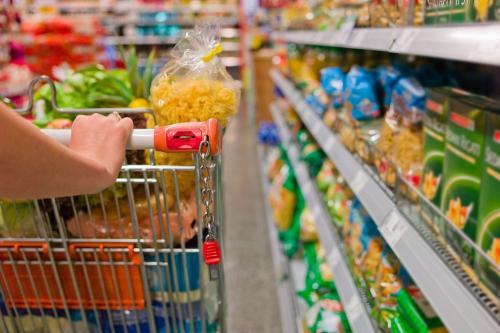BEIJING, Feb. 2 (Xinhua) -- Despite the easing of GDP growth, China's retail sales of consumer goods rose 8 percent to 41.2 trillion yuan (about 6 trillion U.S. dollars) in 2019, data from the National Bureau of Statistics (NBS) showed.
Looking ahead, China's retail markets are tapping new tools and frontiers. Analysts expect livestreaming, the upgrading of traditional stores, and growing demand from lower-tier city users are among several consumption trends worth the wait in China.
HIGH-DOLLAR LIPSERVICE
Li Jiaqi, a popular online celebrity, tries on different lipsticks colors and shares his experience using them as over 3 million viewers watch his every move through a livestreaming shopping platform.
For every lipstick collection, he gives comprehensive details about the packaging, texture, smell, moisture and durability, and recommends the ones he likes by saying "Oh My God! Girls! Take it! Take it!"
Li impressed Chinese people by selling over 15,000 lipsticks in 15 minutes and beating Jack Ma, the co-founder of Alibaba Group, in a live-streamed lipstick sell-off on Singles' Day. The media has dubbed him the "Lipstick King."
As one of the growing number of online influencers, Li is the face of a new way of shopping in the country, sweeping retailers in a boom of "live commerce," the convergence of e-commerce and livestreaming.
Taobao Live, the live-streaming platform of e-commerce giant Alibaba, recorded sales of 20 billion yuan during the Singles Day shopping event on Nov. 11 last year, accounting for around 7.5 percent of the group's overall sales.
The live-streaming explosion is boosting China's e-commerce sector. The country's online sales surged 16.5 percent in 2019, accounting for more than one-quarter of total consumption, NBS data showed.
Some stores in small commodity hubs tried to tap into the growing market by using limited-time discounts to encourage quick orders during livestreaming sessions, and increased sales to more than five times usual levels. They attributed the success to the rising importance of livestreaming as a channel for sales.
With the rapid development of the new technologies of 5G, 4K and VR, the experience of online shopping is getting closer to traditional offline methods, and there is still room for new businesses and models to boom in the future, said an industry report.
"FUTURISTIC" RETAIL
Facing the impact of online shopping and a drastic fall in turnover, a number of department stores and shopping malls are seeking transformations by integrating multiple functions like shopping, dining and entertainment.
Chinese department store SKP has launched a futuristic "retail experience space" in Beijing featuring robotic sheep that breathe, move and even make sounds in a lifelike manner, as well as Martians and penguins.
The company has teamed up with Gentle Monster, the Seoul-based brand known for its bold and highly evocative retail design, to create premises fit for today's generation of digital-savvy shoppers.
"I've never been to such an imaginative store," said Lei Tong, an online-shopping fan from Beijing, who spent a whole afternoon in the shopping mall with her friends.
"It's about how to break consumers' expectations and constantly surprise them," Gentle Monster CEO Hankook Kim said. "This appears to resonate with millennials today, who are looking for more meaning behind their purchases."
The government has also adopted measures to pursue steady progress in the renovation and upgrading of shopping streets, improve the business and consumption environment in shopping areas, and promote stronger fusion between online and offline commerce.
RURAL GOLDEN RUSH
Although large cities still contributed a larger share of consumption, that of lower-tier cities and rural regions continued to grow fast. Retail sales in rural areas rose 9 percent, outpacing the 7.9-percent expansion in urban areas in 2019.
E-commerce platforms are helping China's rural areas prosper by efficiently matching the supply of local produce with the growing appetite of urban consumers, while some players are also introducing urban industrial products into rural areas to aid local people in creating a higher-quality life, according to a report by the Chinese Academy of International Trade and Economic Cooperation.
China's e-commerce giant JD.com launched a drone delivery program to speed up deliveries to consumers in some of China's most remote areas. Other platforms like Pinduoduo have worked with local governments to include poor households in a sound industrial chain.
"Online shopping has made my life much easier. Living in the countryside is not so different from living in the city," said Yiqiong, a villager living in central China's Hunan Province.
Morgan Stanley predicted that urban population growth, improved transportation and growing disposable incomes could triple consumption levels in China's smaller cities by 2030 from 2018.
Consumption has remained the Chinese economy's top growth driver for six consecutive years. Government policies including tariff-cutting, innovation in supervision, and the construction of more convenient and intelligent facilities, are in the pipeline to further spur consumption.
NBS director Ning Jizhe expected consumption to further play its fundamental role in powering China's economic growth in 2020 as consumers' willingness to spend picks up with their rising incomes, market reforms and the enhanced supply of quality products and services.




 A single purchase
A single purchase









